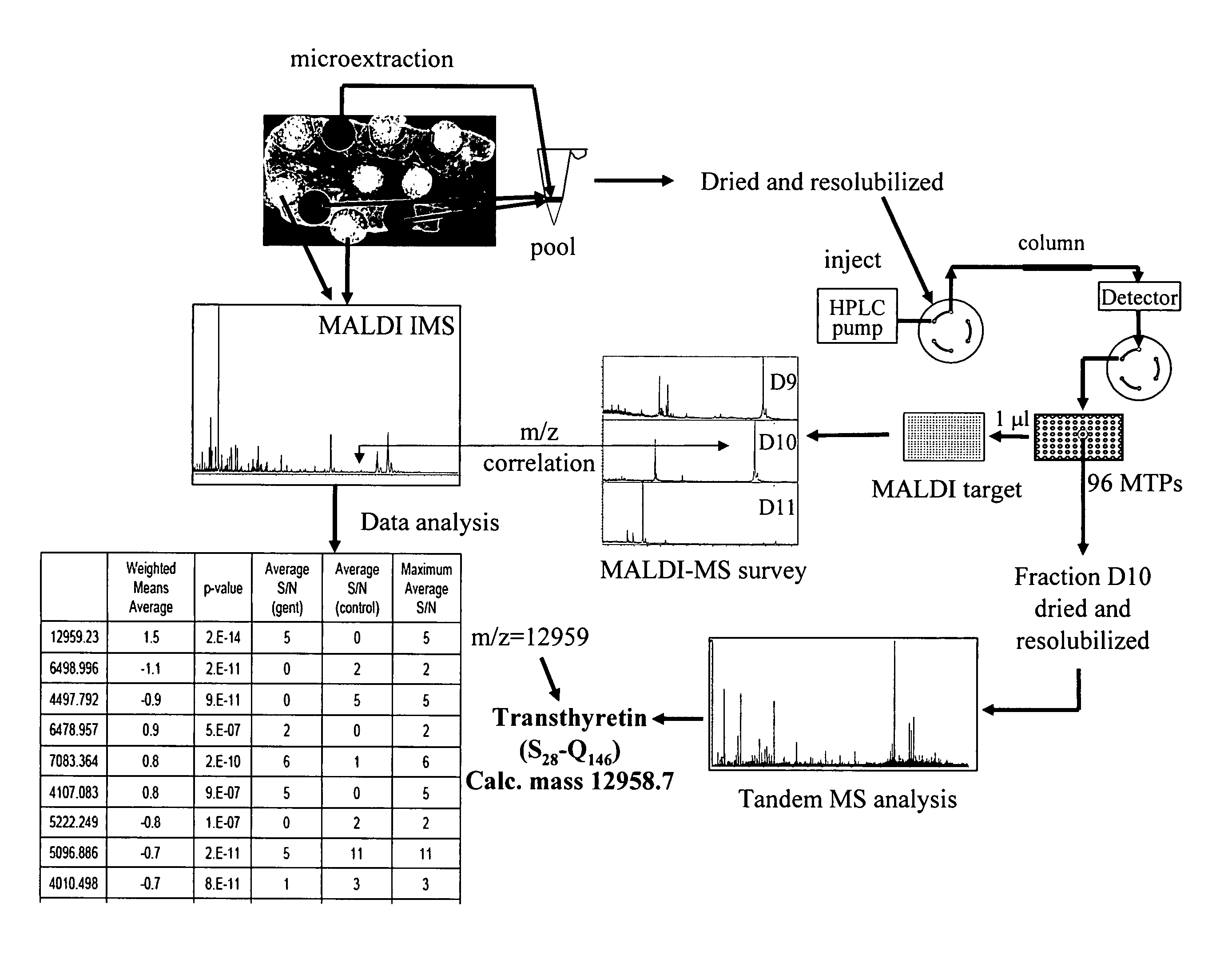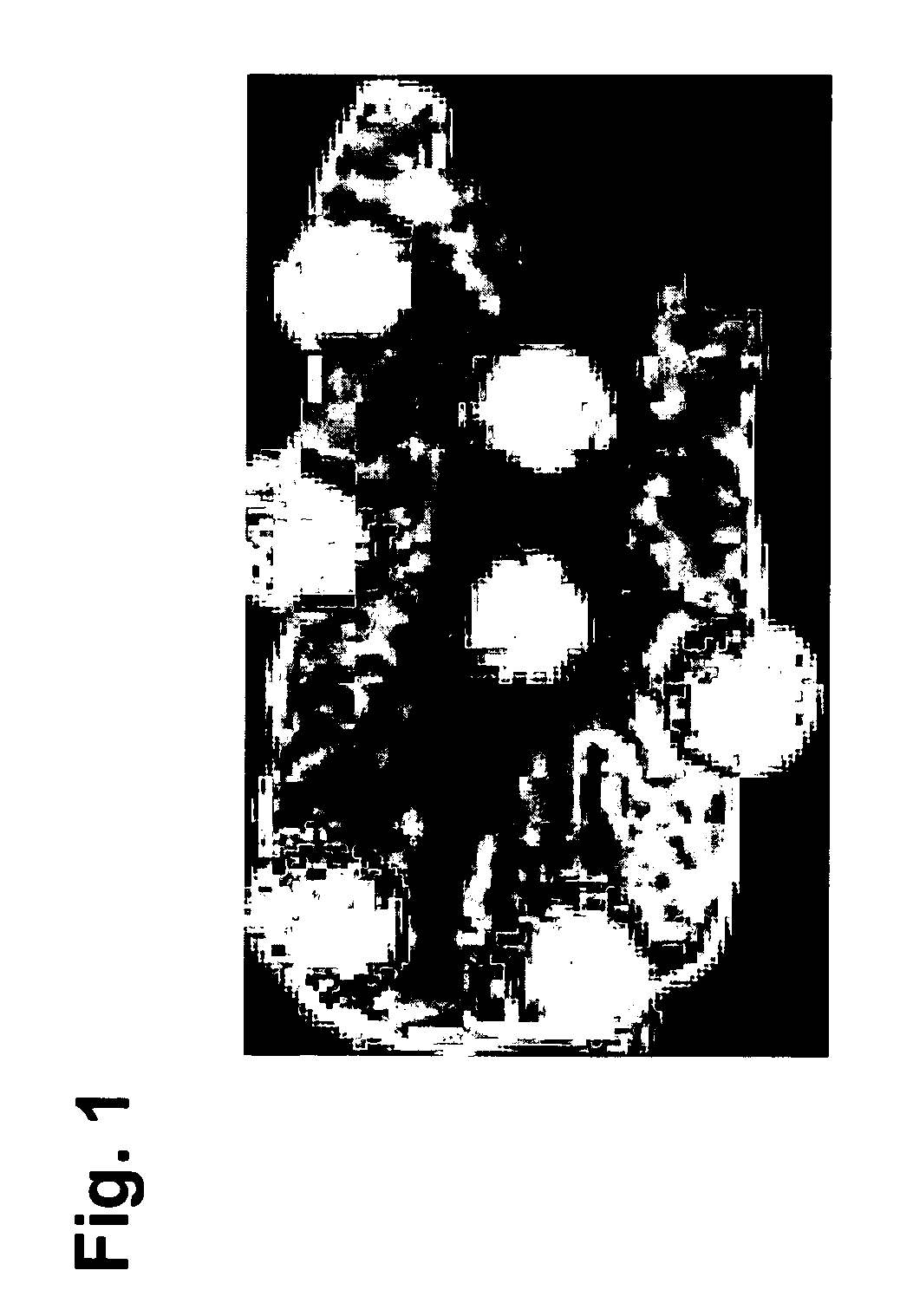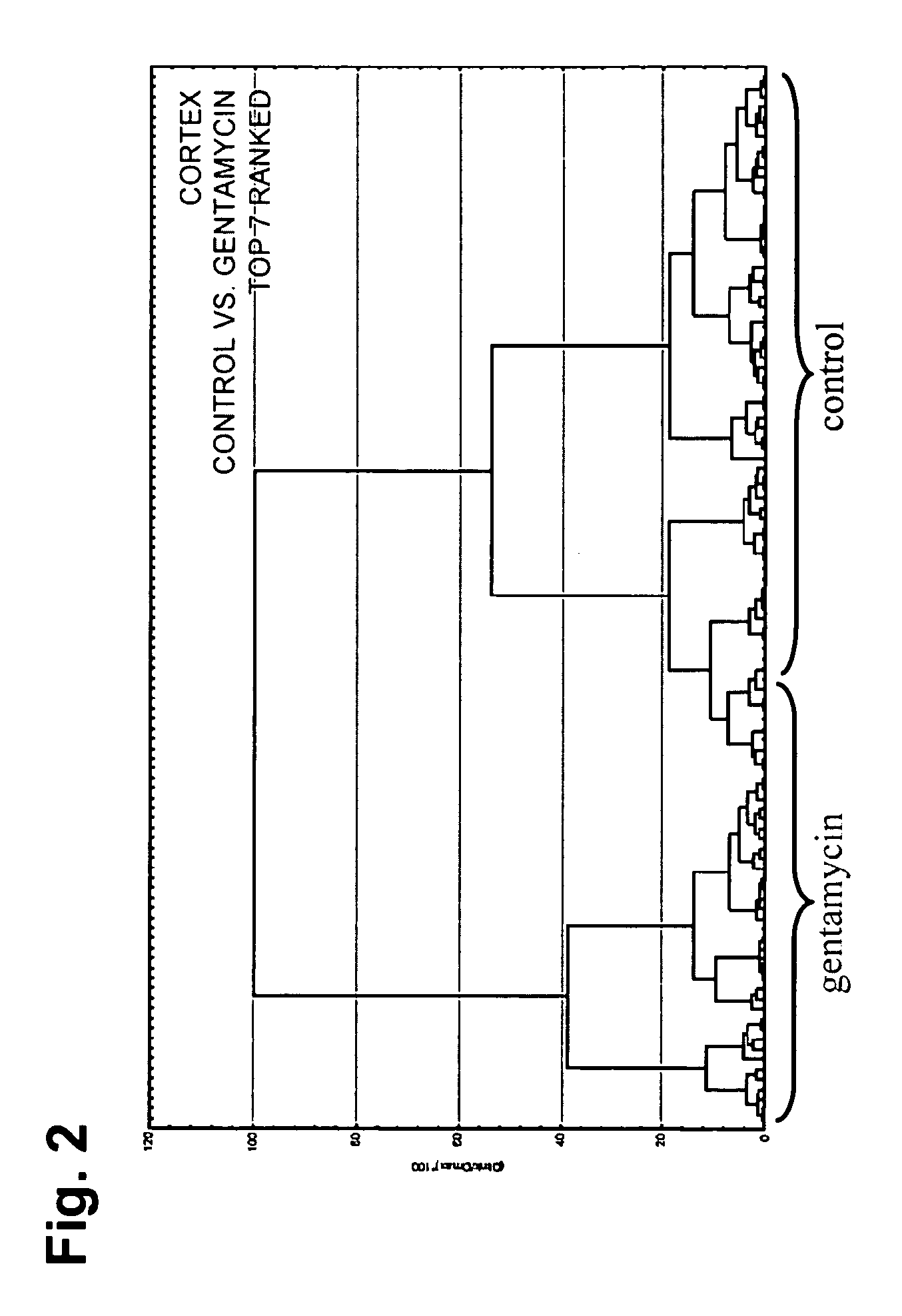In situ polypeptide identification
a polypeptide and in situ technology, applied in the field of in situ polypeptide identification, can solve the problems of contaminant problems, increased time to prepare homogenization,
- Summary
- Abstract
- Description
- Claims
- Application Information
AI Technical Summary
Problems solved by technology
Method used
Image
Examples
example 1
Model System for Nephrotoxicity
Example 1a)
Animal Treatment
[0059] Permission for animal studies was obtained from the local regulatory agencies, and all study protocols were in compliance with animal welfare guidelines. Male HanBrl: Wistar rats of approximately 12 weeks of age (300g±20%) were obtained from BRL, Füllinsdorf, Switzerland. The animals were housed individually in Macrolone cages with wood shavings as bedding at 200C and 50% relative humidity in a 12-hr light / dark rhythm with free access to water and Kliba 3433 rodent pellets (Provimi Kliba AG, Kaiseraugst, Switzerland).
[0060] Animals were treated for 7 consecutive days with 100 mg / kg / day Gentamicin (dissolved in saline) or vehicle by subcutaneous (sc) injections and sacrificed 24 hours after the last application by CO2 inhalation. Immediately preceding sacrifice, terminal blood samples for clinical chemistry investigations were collected from the retroorbital sinus under isofluoran anesthesia.
example 1b
)
[0061] Representative kidney samples were fixed in 10% neutral buffered formalin. All samples were processed using routine procedures and embedded in Paraplast. Tissue sections approximately 2-3 microns were cut and stained with hematoxylin-eosin (HE) or periodic acid-Schiff (PAS).
example 2
MALDI-IMS of Rat Kidney Cortex Treated with Gentamicin
[0062] The differential protein expression was studied within the areas of the kidney (Cortex, Medulla, Papilla) to investigate whether the histopathologically-observed toxicity of gentamicin could be correlated by IMS. Several protein peaks in the cortex area were significantly modulated upon gentamicin administration.
[0063] Marked degeneration / regeneration of proximal tubules (grade 4) was clearly observed in rats treated with 100 mg / kg / day gentamicin for 7 days. This finding was correlated to the analysis of rat kidney thin sections by MALDI IMS. 9 control and 9 gentamicin-treated rat kidneys thin sections (3 animals, 3 sections from each animal; the thin section was spotted with matrix as shown in FIG. 1) were subjected to mass spectrometric analysis as described below.
PUM
 Login to View More
Login to View More Abstract
Description
Claims
Application Information
 Login to View More
Login to View More - R&D
- Intellectual Property
- Life Sciences
- Materials
- Tech Scout
- Unparalleled Data Quality
- Higher Quality Content
- 60% Fewer Hallucinations
Browse by: Latest US Patents, China's latest patents, Technical Efficacy Thesaurus, Application Domain, Technology Topic, Popular Technical Reports.
© 2025 PatSnap. All rights reserved.Legal|Privacy policy|Modern Slavery Act Transparency Statement|Sitemap|About US| Contact US: help@patsnap.com



